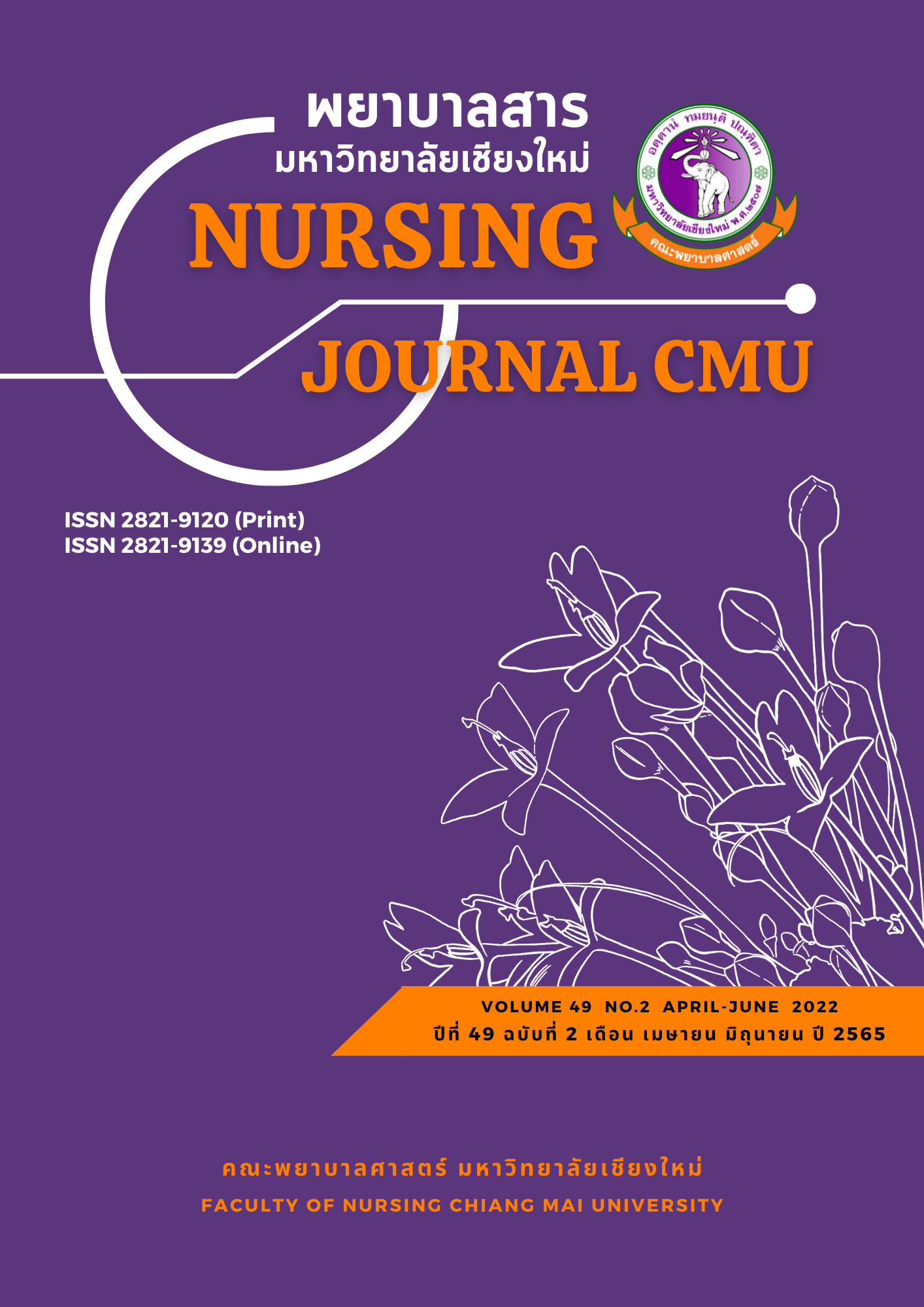Effect of the Buddy Care Innovation on Assessment of Diabetic Foot Complications Among Persons with Type 2 Diabetes in Huai Khrai Sub-District, Maesai District, Chiang Rai Province
Keywords:
The Buddy Care Innovation, Assessment, Diabetic foot complicationsAbstract
Diabetic foot complications considerably affect quality of life for diabetes patients, resulting in disability and sometimes death. The Buddy Care innovation is a healthcare innovation which encourages diabetic foot screening with buddy assistance to monitor and provide notification for self-care to prevent diabetic foot complications. This quasi-experimental study aimed to compare the number of participants who correctly screened their diabetic foot complications in patients with type 2 diabetes in innovative buddy care groups. The findings were evaluated both before and after innovation utilization, including comparison between participants in buddy care groups and those who received standard treatment. The participants were chosen by purposive sampling based on inclusion criteria and consisted of 40 patients with type 2 diabetes divided into an experimental group of 20 people and a control group of 20 by sampling without replacement. The research tools were a general information questionnaire and an observation form for diabetic foot complication screening, with a content validity value of 1.0 and reliability value of 1.0. The data was analyzed using McNemar Test and the Chi-square Test.
The results revealed that after using the buddy care innovation, the number of participants who correctly assessed diabetic foot complications in patients with type 2 diabetes in the experimental group was higher than before using the buddy care innovation with statistical significance (p < 0.001), and higher than the group of participants who received standard treatment with statistical significance (p < 0.01).
The findings indicate that the buddy care innovation could be used to enhance diabetic foot complication screening, as well as to effectively prevent diabetic foot complications.
References
Bandura, A. (1986). Social foundations of though and action: A social cognitive theory. New Jersey: Prentice-Hall.
Boonsong, J., Charoenpun, C., & Worawong, C. (2016). Effects of the health behavior promotion program for preventing foot complications in patients with type 2 diabetes admitted to Dong Khwang Tambon health promotion hospital, Muang Nakhon Phanom, Nakhon Phanom province. Journal of the office of DCP 7 Khonkaen, 23(2), 46-59. (in Thai)
Chiangrai Provincial Public Health Office. (2020). Report of NCD clinic plus. Retrieved from https://cri.hdc.moph.go.th/hdc/reports/ page_kpi.php?flag_kpi_page_kpi.php?flag_kpi_level=9&flag_kpi_year=2020. (in Thai)
Cohen, J. (1977). Statistical power analysis for the behavioral sciences (Rev. ed.). New York: Academic Press.
Division of Non Communicable Diseases. (2015). Report of of non communicable disease 2015. Retrieved from http://thaincd.com/document/file/download/paper-manual/Annual-report-2015.pdf. (in Thai)
Division of Non Communicable Diseases. (2019). Information of non communicable disease. Retrieved from http://www.thaincd.com/2016/mission/documents-detail.php?id=136458& tid=32&gid=1-020. (in Thai)
Gibson, T. B., Driver, V. R., Wrobel, J. S., Christina, J. R., Bagalman, E., DeFrancis, R., … Gatwood, J. (2014). Podiatrist care and outcomes for patients with diabetes and foot ulcer. International Wound Journal, 11(6), 641-648.
Hong Hae Health Promoting Hospital. (2020). Information of non communicable disease. Retrieved from http://msdho.com/msdho1/ncdplus/hh1010-2563. (in Thai)
Khamanee, K. (2005). Instructional model: Many choice (3rded.). Bangkok: Chulalongkorn University Printing House. (in Thai)
Raksa, P. (2020). Effects of experiential learning program on knowledge and assessments for diabetic foot complication in persons with type 2 diabetic among for village Health volunteers. (Master's thesis). Chiang Mai University, Thailand (in Thai)
Srimaksuk, K. (2014). The Outcomes of the Utilization of Clinical Nursing Practice Guidelines in Prevention of Foot Ulcer Amongst Diabetic Type II Patients. (Master's thesis). University Christian, Thailand (in Thai)
Sriwong, N. (2019). Self-care behaviors of type II diabetes mellitus patients attended in Hun Na Ngam Sub-District Health Promoting Hospital, Sribunruang District, Nong Bua Lamphu Province. Journal of Health Science. 28(4), 620-627. (in Thai)
World Health Organization. (2018). Diabetes mellitus. Retrieved from https://www.who.int/health-topics/diabetes# tab=tab_1
Downloads
Published
How to Cite
Issue
Section
License
Copyright (c) 2022 Nursing Journal

This work is licensed under a Creative Commons Attribution-NonCommercial-NoDerivatives 4.0 International License.
บทความที่ได้รับการตีพิมพ์เป็นลิขสิทธิ์ของวารสารพยาบาลสาร
ข้อความที่ปรากฏในบทความแต่ละเรื่องในวารสารวิชาการเล่มนี้เป็นความคิดเห็นส่วนตัวของผู้เขียนแต่ละท่านไม่เกี่ยวข้องกับมหาวิทยาลัยเชียงใหม่ และคณาจารย์ท่านอื่นๆในมหาวิทยาลัยฯ แต่อย่างใด ความรับผิดชอบองค์ประกอบทั้งหมดของบทความแต่ละเรื่องเป็นของผู้เขียนแต่ละท่าน หากมีความผิดพลาดใด ๆ ผู้เขียนแต่ละท่านจะรับผิดชอบบทความของตนเองแต่ผู้เดียว






